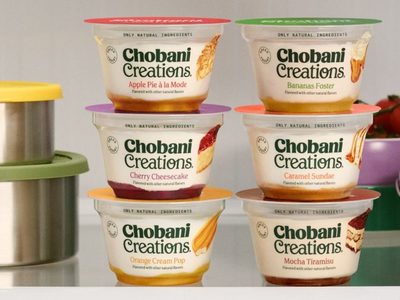
KANSAS CITY — The research and data analytics that have altered how sports like baseball, football, basketball and others are played also are rapidly transforming the market for sports nutrition products. What started with applications formulated to boost physical performance has grown into a broader mainstream category brimming with innovation to maximize warmup, exertion and recovery. For the last 20 years, sports nutrition has been at the vanguard of food and beverage innovation, and exciting, even futuristic work in this field today around personalized health demands close attention from all corners of the consumer packaged foods industry.
PepsiCo’s Gatorade brand is synonymous with sports nutrition, and the company has methodically broadened its reach. Hydration beverages lie at the heart of the line, but it also features protein-centric shakes, bars and powders, and energy-inducing chews and gels. The introduction of the Gx Sweat Patch, which users wear to monitor how much they sweat during a workout, has further extended the brand’s reach into the realm of personalized nutrition.
But the roots of sports nutrition lie in the recognition by nutritionists, coaches and athletes of the importance adequate hydration and protein intake have on performance. This insight led to the development of beverages featuring sodium and electrolytes, and protein powders to promote muscle growth. Companies launched these products with athletes in mind, but marketers quickly identified the appeal to the broader consumer market and have been able to generate demand.
Both food and beverage companies recognize the sports nutrition category’s mass market potential. The Coca-Cola Co.’s November 2021 acquisition of Body Armor for $5.6 billion and Nestle’s recent acquisition of Orgain, a manufacturer and marketer of protein-centric products in beverage, bar and powder applications, reinforce how those companies see more opportunity in the category.
Of even greater importance to product developers are the kinds of opportunities in sports nutrition that lie ahead. Protein ingredient innovation, for example, is advancing as ingredient manufacturers identify how specific amino acids may help optimize performance.
Most sports nutrition research has been on the pre-, during- and post-workout regimen, but researchers also are investigating how nutrition may affect a person’s ability to focus and rest. Another wave of sports nutrition innovation may be on tap as more is learned about what types of ingredients help athletes rest and enhance mental focus.
While marketers are promoting applications to consumers interested in sports nutrition, the day is coming when nutrition programs are individualized based on age, gender and performance goals. This trend already is manifest in professional sports where athletes must be in top physical condition and are supported by staff with the singular goal of using nutrition to maximize performance.
Average consumers do not have the benefit of a multi-million-dollar organization to monitor and cater to their health and vitality. But, in the same manner that research and analytics have disrupted the strategy of high-level athletics, technologies like artificial intelligence may broaden the reach of the sports nutrition category. One day such technologies as AI may offer consumers personalized recommendations about the nutrition they need to fit their lifestyle and goals, and it will be up to food and beverage companies to ensure they are ready to capitalize on this opportunity.




